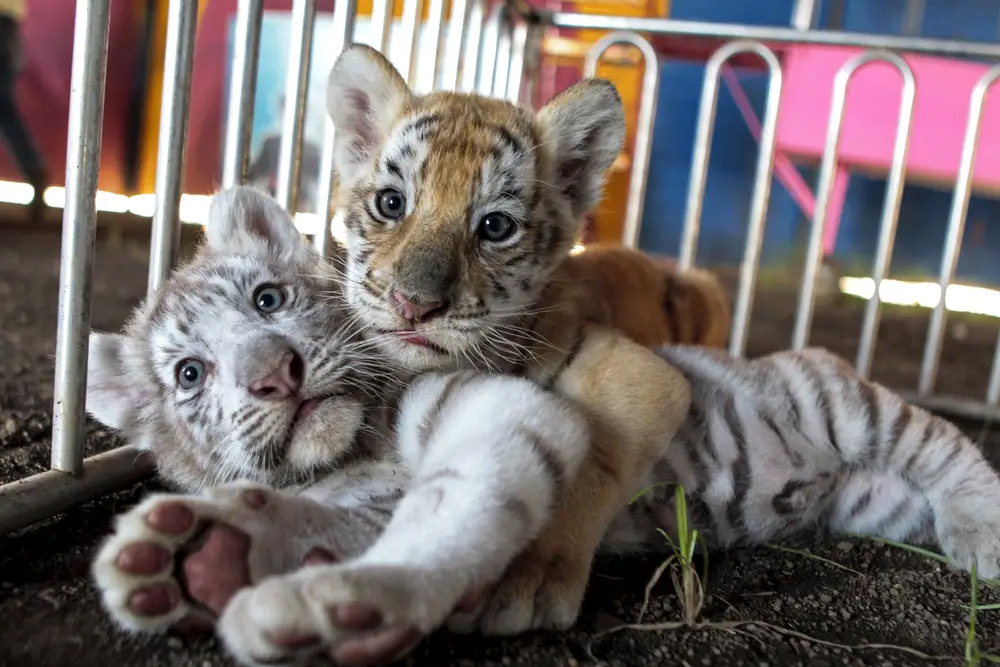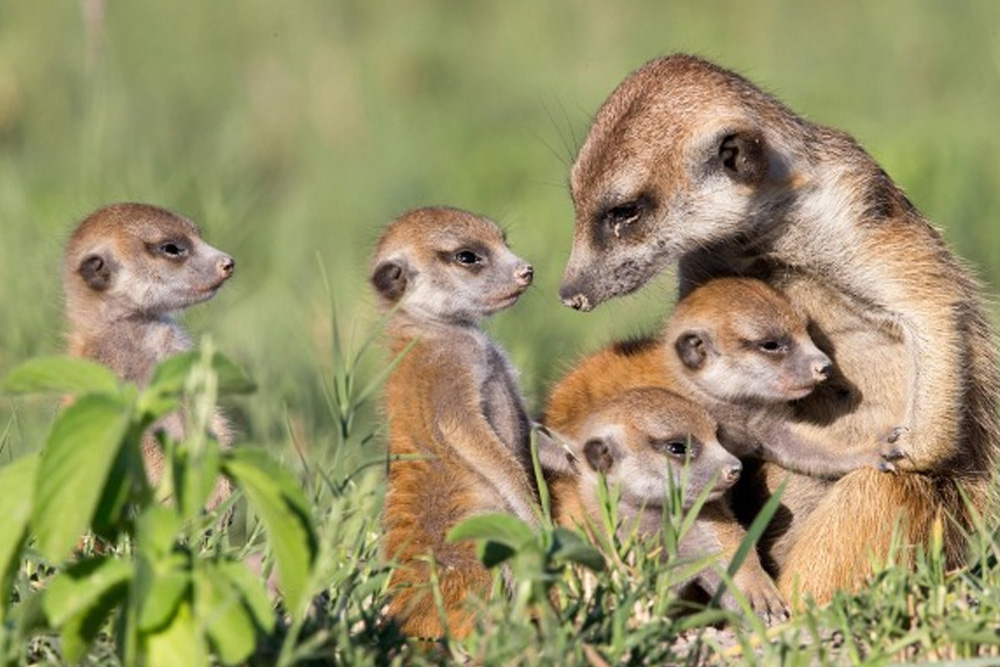How to Prevent the Extinction of the World Most Vulnerable Wild life

The world is home to a rich and diverse array of wild animals, from the majestic elephants of Africa to the tiny hummingbirds Extinction of the Americas. These animals play important roles in their ecosystems, providing ecological services, such as pollination, seed dispersal, pest control and nutrient cycling. They also have intrinsic value, as they are part of the natural heritage and beauty of our planet.
However, many of these wild animals are facing serious threats from human activities, such as habitat loss and fragmentation, overexploitation, poaching, pollution, climate change and invasive species. According to the International Union for Conservation of Nature (IUCN), more than 37,000 species of animals are threatened with extinction, which means they are at risk of disappearing forever.
In this article, we will explore some of the world’s most endangered wild animals and what we can do to save them. We will learn about their characteristics, habitats, threats and conservation efforts. We will also discover how these animals are connected to us and why we should care about their survival.
Related articles
1- Treat Your Pet Like Family: 10 Fun Activities to Do Together
2- Keep Your Pet Healthy and Happy with Regular Veterinary Check-ups
3- How to Keep Your Pets Mind Sharp with Unique Games and Foods!
4- From Fat to Fit: Home Exercises for Your Obese Pet
By reading this article, you will gain a better understanding and appreciation of the diversity and importance of wild animals. You will also become more aware of the challenges and opportunities for wildlife conservation. You will be inspired to take action and make a difference for these animals and their habitats.
In this section, we will present some examples of the world’s most endangered wild animals, based on the IUCN Red List of Threatened Species. We will also explain the main causes of their endangerment and the actions that are being taken or can be taken to protect them Extinction.
- Amur Leopard: The Amur leopard is a subspecies of leopard that lives in the temperate forests of eastern Russia and northeastern China. It is critically endangered, with only around 100 individuals left in the wild². The main threats to the Amur leopard are habitat loss and fragmentation due to logging, agriculture and infrastructure development; poaching for its fur and body parts; and prey depletion due to illegal hunting. Some of the conservation efforts for the Amur leopard include establishing and expanding protected areas; enforcing anti-poaching laws; monitoring and patrolling its habitat; supporting captive breeding and reintroduction programs; and raising awareness and engaging local communities.
- Javan Rhino: The Javan rhino is a subspecies of rhino that lives in the tropical forests of Java, Indonesia. It is critically endangered, with only around 75 individuals left in the wild¹. The main threats to the Javan rhino are habitat loss and degradation due to human encroachment and natural disasters; poaching for its horn, which is used in traditional medicine; and disease outbreaks. Some of the conservation efforts for the Javan rhino include protecting and restoring its habitat; preventing and reducing poaching; conducting surveys and research on its population and health status; translocating some individuals to create a second population; and involving local stakeholders in conservation activities.
- Sunda Island Tiger: The Sunda Island tiger, or the Sumatran tiger, is a subspecies of tiger that lives in the forests of Sumatra, Indonesia. It is critically endangered, with only around 600 individuals left in the wild². The main threats to the Sunda Island tiger are habitat loss and fragmentation due to deforestation, palm oil plantations and mining; poaching for its skin, bones and other parts, which are used in traditional medicine or as trophies; and human-tiger conflict due to livestock depredation or perceived threat. Some of the conservation efforts for the Sunda Island tiger include conserving and connecting its habitat; strengthening law enforcement and anti-poaching measures; reducing human-tiger conflict through compensation schemes, education and awareness campaigns; supporting community-based conservation initiatives; and promoting sustainable land use practices Extinction.
- Vaquita: The vaquita is a species of porpoise that lives in the Gulf of California, Mexico. It is critically endangered, with only around 10 individuals left in the wild¹. The main threat to the vaquita is bycatch, which means accidental entanglement in fishing nets, especially those used for illegal fishing of another endangered species, the totoaba fish. The totoaba fish is prized for its swim bladder, which is sold on the black market in China for its supposed medicinal properties. Some of the conservation efforts for the vaquita include banning gillnets and other harmful fishing gear; enforcing fishing regulations and combating illegal fishing; rescuing and rehabilitating stranded or injured vaquitas; establishing a sanctuary for captive breeding and release; and raising awareness and support for vaquita conservation.
- Orangutan: The orangutan is a species of great ape that lives in the rainforests of Borneo and Sumatra, Indonesia. It is critically endangered, with only around 100,000 individuals left in the wild². The main threats to the orangutan are habitat loss and degradation due to logging, palm oil plantations, fires and agriculture; hunting for bushmeat, pet trade or conflict with humans; and disease transmission from humans or domestic animals. Some of the conservation efforts for the orangutan include protecting and restoring its habitat; reducing hunting and trade; rescuing and rehabilitating orphaned or injured orangutans; supporting community-based conservation projects; and educating and empowering local people to coexist with orangutans.
These are just some examples of the many wild animals that are facing extinction due to human activities. However, there is still hope for these animals if we act now to conserve them and their habitats. We can do this by supporting organizations that work for wildlife conservation; adopting sustainable lifestyles that reduce our environmental impact; advocating for policies and laws that protect wildlife and their habitats.
In this section, we will present some examples of the wildlife conservation actions that are being taken or can be taken to protect the endangered wild animals and their habitats. We will also explain the benefits and challenges of these actions, and how we can support them.
- Protected Areas: Protected areas are regions of land or water that are designated and managed for the conservation of nature and biodiversity. They can provide safe havens for endangered wild animals, as well as other ecosystem services, such as water regulation, carbon sequestration and tourism. However, protected areas also face many threats, such as encroachment, poaching, pollution and climate change Extinction . Therefore, they need to be well-planned, well-funded, well-governed and well-connected to other habitats. Some examples of protected areas that are home to endangered wild animals are Ujung Kulon National Park in Indonesia for the Javan rhino¹, Land of the Leopard National Park in Russia for the Amur leopard², and Gunung Leuser National Park in Indonesia for the orangutan².
- Anti-Poaching and Law Enforcement: Anti-poaching and law enforcement are actions that aim to prevent and reduce illegal hunting and trade of endangered wild animals and their parts. They involve patrolling, monitoring, arresting, prosecuting and penalizing poachers and traffickers, as well Extinction as confiscating and destroying illegal wildlife products. They also involve raising awareness and educating consumers about the impacts of wildlife crime on animals, ecosystems and human health. However, anti-poaching and law enforcement also face many challenges, such as corruption, lack of resources, lack of coordination and lack of political will. Therefore, they need to be supported by international cooperation, community involvement and demand reduction. Some examples of anti-poaching and law enforcement initiatives that are helping endangered wild animals are Operation Thunderstorm by INTERPOL³, SMART (Spatial Monitoring And Reporting Tool) by WWF, and WildLeaks by Elephant Action League.
- Human-Wildlife Coexistence: Human-wildlife coexistence is a concept that promotes peaceful and mutually beneficial relationships between humans and wildlife. It involves reducing human-wildlife conflict, which occurs when wildlife negatively affects human lives or livelihoods, or vice versa. It also involves increasing human-wildlife benefits, which occur when wildlife positively contributes Extinction to human well-being or development. Human-wildlife coexistence can be achieved by implementing various measures, such as fencing, deterrents, compensation schemes, insurance schemes, alternative livelihoods, community-based conservation and education. However, human-wildlife coexistence also faces many challenges, such as cultural barriers, economic constraints, social inequalities and political conflicts. Therefore, it needs to be based on sound science, participatory processes and adaptive management. Some examples of human-wildlife coexistence projects that are supporting endangered wild animals are Living with Tigers by Wildlife Conservation Action, Living with Lions by Lion Guardians, and Living with Elephants by Elephants Without Borders.
- Captive Breeding and Reintroduction: Captive breeding and reintroduction are actions that aim to increase the population size and genetic diversity of endangered wild animals by breeding them in captivity and releasing them into suitable habitats in the wild. They can help rescue critically endangered species from the brink of extinction, as well as restore ecological functions and processes in degraded habitats. However, captive breeding and reintroduction also face many risks, such as disease transmission, genetic problems, behavioral problems and low survival rates. Therefore, they need to be carefully planned, monitored and evaluated according to international standards and guidelines. Some examples of captive breeding and reintroduction programs that are saving endangered wild animals are Vaquita CPR for the vaquita, Amur Leopard Reintroduction Project for the Amur leopard, and Sumatran Rhino Sanctuary for the Sumatran rhino.
In conclusion, this article presents some of the world’s most endangered wildlife and the main causes of their decline. Some examples of wildlife conservation actions that are being carried out or can be carried out to protect these animals and their habitats were also presented. These actions involve different strategies, such as establishing protected areas, combating illegal hunting and trade, promoting coexistence between humans and wild animals, and supporting captive breeding and reintroduction into the wild. These actions bring benefits not only to wild animals, but also to ecosystems and the people who depend on them.
However, these actions also face many challenges, such as lack of resources, lack of coordination, lack of political will, corruption, conflicts and climate change. Therefore, they need to be supported by international cooperation, community involvement and reduced demand for wildlife products. Furthermore, they need to be nurtured in sound science, a participatory process and adaptive management.
Saving the world’s wild animals is an urgent and complex task that requires commitment and collaboration from all sectors of society. Each of us can do our part by supporting organizations that work to conserve wildlife, adopting responsible lifestyles that reduce our environmental impact, advocating for policies and laws that protect wild animals and their habitats, wildlife issues, and respecting and valuing the diversity and importance of wildlife. Together, we can make a difference for these animals and our planet.
Sobre o Autor




0 Comentários